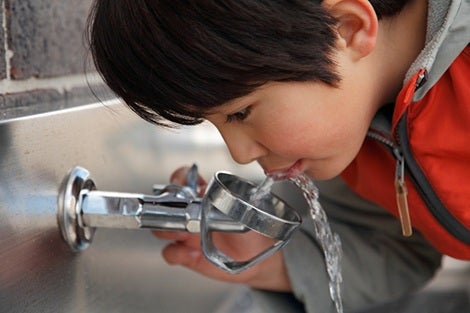Photo by: Pixabay User Bess Hamiti.
During pregnancy, exposure to certain chemical pollutants can create major health problems for both mother and fetus.
Why it matters: Multiple studies from Harvard Chan School have explored how environmental pollutants affect developing fetuses. In some cases, researchers found that exposure to those chemicals was connected to lifelong health issues. In other cases, exposure led to miscarriages or difficulty conceiving. The studies looked at a range of environmental effects:
Flame Retardant:
- On average, women with higher exposure to organophosphate flame retardants—used in polyurethane foam for furniture, baby products, and gym mats—had a 10% lower chance of successful fertilization and 31% lower chance of implantation of the embryo.
- The women also had a 41% decrease in clinical pregnancy (fetal heartbeat confirmed by ultrasound) and a 38% decrease in live births.
Fine Particulates:
- Particulate matter is created by a mixture of fossil fuel combustion in traffic, power plants, and other sources of pollution that can be inhaled and cause serious health effects.
- One study showed that children exposed to high levels of particulates in late pregnancy were 61% more likely to have high blood pressure compared to other kids. Exposure to those pollutants in early childhood was also associated with executive function and behavioral problems.
- Another study showed that women undergoing in-vitro fertilization (IVF) had lower odds of a successful transplantation if exposed to pollutants from cars and trucks.
Phthalates:
- Pthalates are synthetic chemicals used in a wide range of products: from vinyl flooring to food packaging to medical tubing to cosmetics.
- Women with high concentrations of a type of phthalate called di-(2-ethylhexyl) phthalate, or DEHP, were 60% more likely to lose a pregnancy prior to 20 weeks than women with the low concentrations.
- Another study showed that women with high levels a phthalate called monoethyl phthalate (MEP), had an increased risk of excessive weight gain and gestational diabetes.
Ambient Temperature:
- Researchers studied more than 60,000 cases of Sudden Infant Death Syndrome (SIDS). In summer, they found, temperatures that were 10 degrees Fahrenheit warmer than average were associated with an 8.6 % increase in SIDS.
- In winter, that same temperature difference was linked to a 3.1 % decrease in SIDS. Summer risks were greater among black infants than white infants, and greater overall in infants 3-11 months old.
Resources:
- Exposure to phthalates may raise risk of pregnancy loss, gestational diabetes
- Common flame retardant chemicals may reduce likelihood of clinical pregnancy, live birth among women undergoing fertility treatments
- Prenatal and childhood traffic-related air pollution exposure and childhood executive function and behavior
- Residential proximity to major roadways and traffic in relation to outcomes of in vitro fertilization
- Dirty Air in Pregnancy May Raise Kid’s Blood Pressure Risk
- Ambient Temperature and Sudden Infant Death Syndrome in the United States
- Air pollution might make it harder to get pregnant
- Lifetime air pollution exposure and asthma in a pediatric birth cohort
- Traffic-related pollution linked to risk of asthma in children

Public Health Benefits Associated with Mercury Emissions Reductions from U.S. Power Plants
Our new white paper makes a science-based case for why it is appropriate and necessary to regulate mercury emissions from the power sector.

House Dust in Mining-Impacted Communities May Impact Children's Health
Young children are a particular concern because early exposures to metals commonly found at mining sites are associated with neurodevelopmental deficits.

New pediatrician network puts spotlight on climate change’s effects on children
As the effects of climate change play out worldwide, pediatricians see the evidence in their offices.

Reducing air pollution has helped children in Northeast U.S., study finds
States in the Northeastern U.S. have made a considerable effort to make their air cleaner by reducing toxic mercury, sulfur dioxide and greenhouse gases emitted by the region's power plants, improving the health of children in the area in the process.

Air pollution and children’s health
A new study finds that a program to reduce greenhouse gas emissions from power plants in the Eastern U.S. also has significant health benefits for children in the region.

'Like a sunburn on your lungs': how does the climate crisis impact health?
Our Co-Director Dr. Aaron Bernstein and Research Fellow Dr. Renee Salas share insight into how the climate crisis threatens public health and complicates healthcare.

Increasing Seafood Options in Children’s Diets
Dr. Aaron Bernstein promotes the health benefits of fish in childrens' diets and debunks the idea of high toxicity of seafood.

U.S. children not eating enough shellfish, study says
Explores the new report from the American Academy of Pediatrics, written by Co-director Dr. Aaron Bernstein, on the benefits, risks and sustainability issues surrounding seafood and children's health.

Rubber playground surfaces may contain high lead levels
Researchers tested lead levels in the soil, sand, mulch or rubber surface materials in 28 playgrounds and found the rubber surfaces often averaged two or three times the lead levels of the other materials.

House Dust in Mining-Impacted Communities May Impact Children's Health
Young children are a particular concern because early exposures to metals commonly found at mining sites are associated with neurodevelopmental deficits.

Report: Lead levels too high in many U.S. schools
January 10, 2019 – Millions of children could be getting too much lead in the water they drink at school, according to a new report from Harvard T.H. Chan School of Public Health and the Nutrition Policy Institute at the University of California. More than 40% of schools around the country appear to have higher-than-recommended…

Should Pregnant Women Eat Fish? Exploring Prenatal Exposures to Chemicals
A video series exploring the impact of fish, mercury, and other chemical exposures on pregnant women and their babies.
